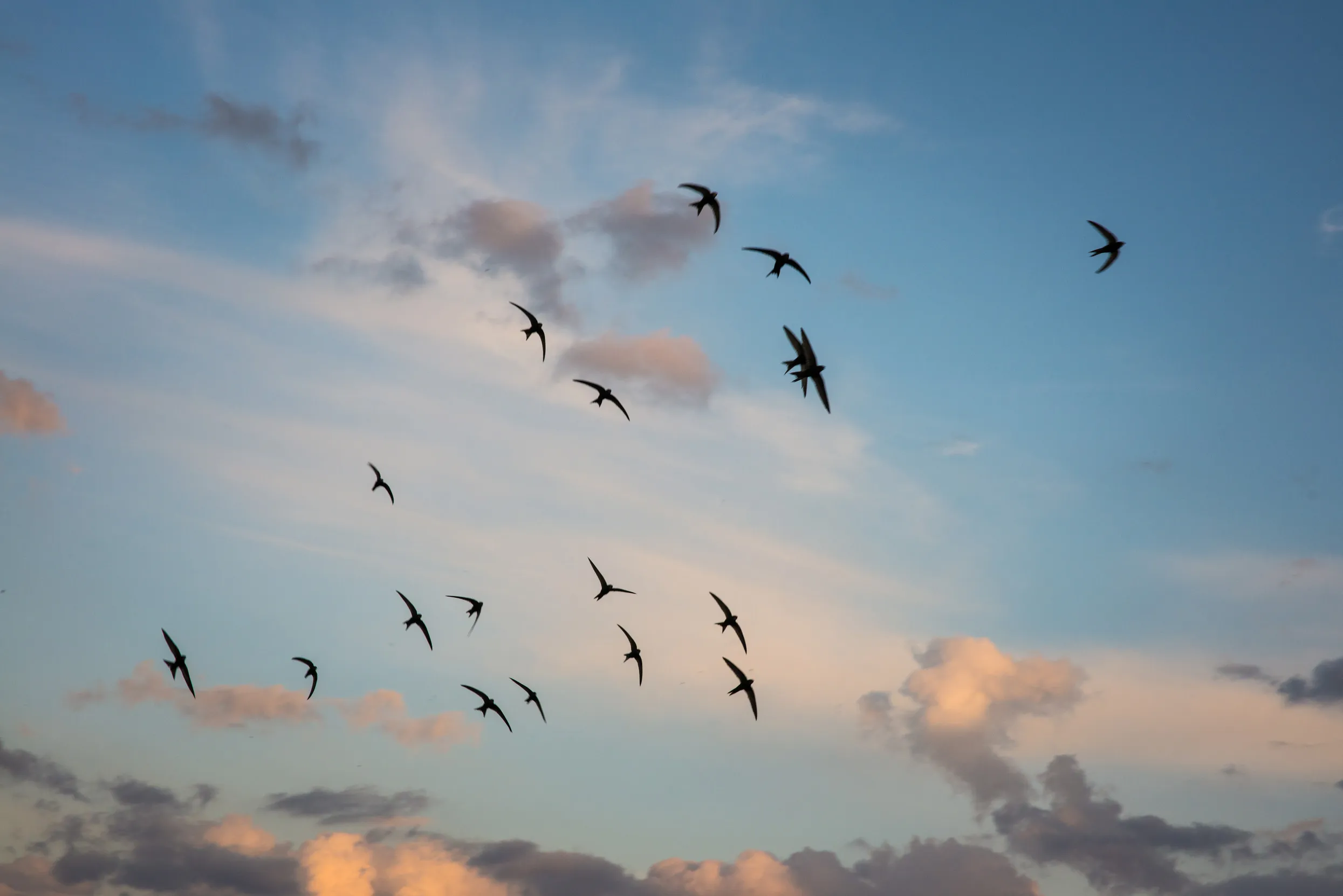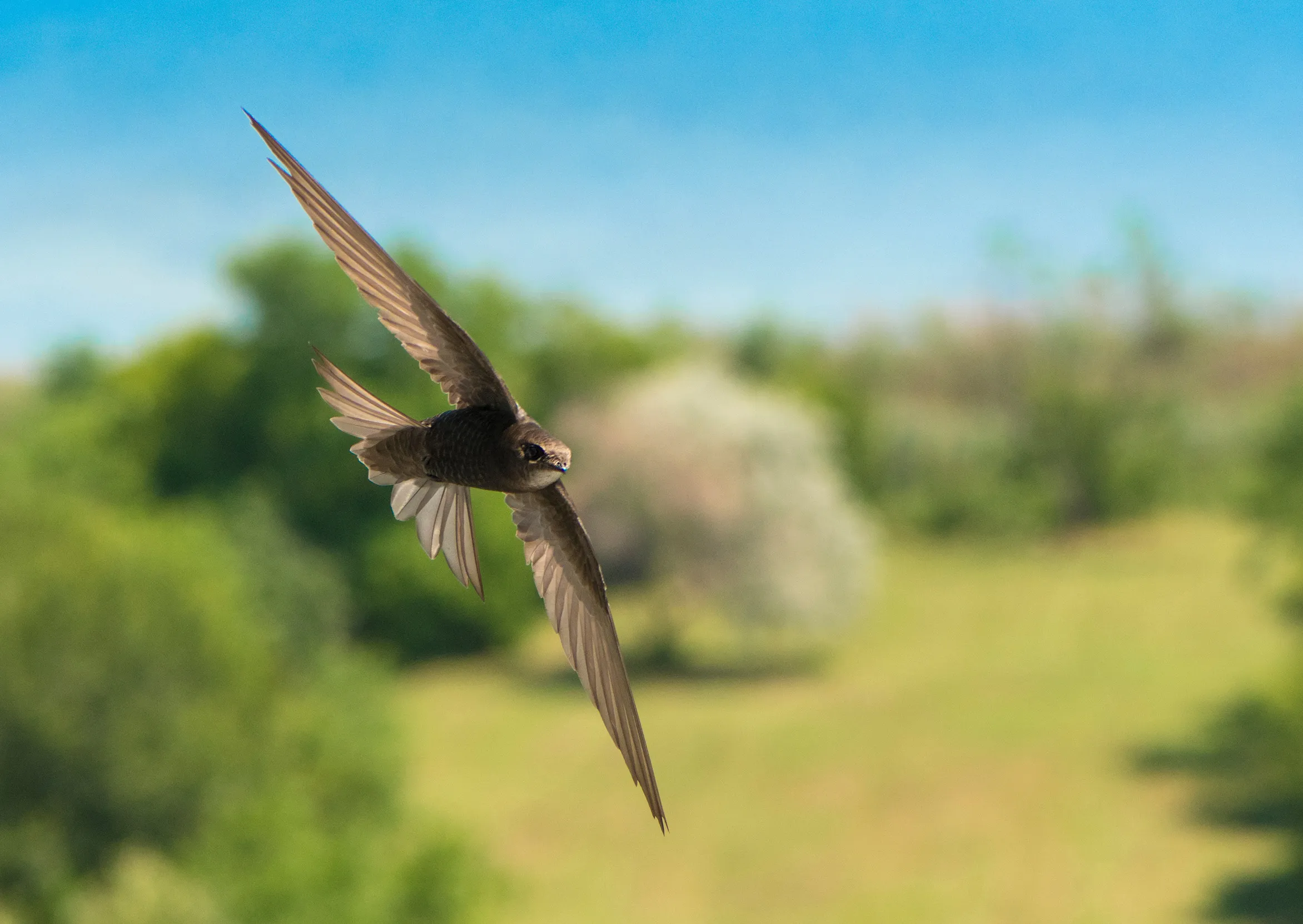Help nesting Swifts – Take part in Swift Mapper
We’re taking action to help swifts. We need your help to look out for nesting or screaming swifts near you so we can identify nest sites that need protection

On this page
Helping nesting Swifts
We’re taking action to secure a future for swifts, but we need your help.
Each year, Swifts fly from Africa to the UK to breed, but numbers here are plummeting and they desperately need help. In just 25 years, more than half of our Swifts have vanished and the loss of nest sites in the roofs of buildings appears to be at least partly responsible. That’s why we’re asking you to look out for nesting Swifts near you and record them on Swift Mapper. We’ve also shared some ideas on how to make your area more welcoming for these fast fliers.

Take part in Swift Mapper
Together with our partners Action for Swifts, Natural Apptitude, Swift Conservation and the Swifts Local Network we’ve developed Swift Mapper – a web-based mapping system and mobile app. By recording sightings of nesting Swifts, you’ll help build a picture of where their nest sites need to be protected and where new ones are needed. If you’re having trouble downloading the mobile app, try these tips from the App Store or Google Play.
To enter a sighting, follow the instructions on the Swift Mapper website here.
How to use swift mapper
Learn how to start using Swift Mapper, and find out what records of flying Swifts we need.
What to look for
Swifts nest in holes in buildings – under roof tiles, in holes in eaves or soffits, for example, so if you see a Swift flying up to a building and vanishing inside, then that’s a nest site. And we’d like to know where those are. But this can be tricky to spot – Swifts don’t always enter or leave their nest sites very often, and they are very quick about it when they do.
So there's something else you can look out for. When Swifts fly fast and low at roof-top height, often in groups and often screaming loudly, this is a very good clue that they are nesting nearby. So we also want records of these screaming parties.
But please don’t report sightings of Swifts that are flying high in the sky, feeding over water or fields, or away from buildings on Swift Mapper. These birds could have travelled long distances and may not be local breeding birds – they don’t give us any information on exactly where they are nesting. Please use BirdTrack instead if you’d like to record these sightings.
Why are we asking you to record sightings of nesting Swifts?
By building a picture of where Swifts are nesting across the UK, Swift Mapper acts as a conservation targeting tool. This means that anyone interested in helping their local Swifts can easily use the data in the system to find the best places to take action.
This could be by protecting existing nest sites or providing new ones in the form of nest boxes and built-in Swift bricks close to where Swifts already nest. This can be done by conservation organisations, local council ecologists and planning teams, local volunteer-based conservation groups and individuals. A growing number of RSPB Local Groups, for example, are using Swift Mapper to target their own local Swift conservation efforts.
To make the information within Swift Mapper as widely available as possible we also share it with the National Biodiversity Network every year.

What you can do
As well as sharing your sightings, you can encourage your friends and neighbours to get involved too. Ask them to look out for and add their own sightings of nesting Swifts and Swift screaming parties to Swift Mapper.
You can also encourage friends and neighbours to put up Swift nest boxes or install Swift bricks where renovations or new building works allow.
An excellent way of contributing to local Swift conservation efforts is to join a local Swift conservation volunteer group. Talk to your nearest RSPB Local Group or look for a Swift Local Network group in your area. And if there isn’t one, why not start one?
Talk to your nearest RSPB Local Group or look for a Swift Local Network group in your area.
Protect our birds, Defend our nature
Now is the time to stand with our birds. Now is the time to act for nature. Together, we can turn their fortunes around.
Protecting Swift nests from building work
Knowing where Swifts are nesting may help pre-empt any nest destruction where it involves an old or derelict building.
As an example, scaffolding on a building can cause problems for Swifts as it can delay parents accessing their nests to feed the young or stop them entering entirely. This is because of the way Swifts fly – they need at least five metres of clear space to enter and leave their nest. In England and Wales, it’s not against the law to put up scaffolding on a building where Swifts are actively nesting. But it should be built in a way that allows Swifts to access their nest. Anything that blocks the nest, like poles or platforms could prevent the nest from being used and, therefore, would be against the law.
Outside of the breeding season (September - April)
If you see renovation work starting on a building with a known nest site at any time of year and it’s safe and you feel comfortable doing so, make a friendly approach to the property owner, contractor or contracting organisation/authority. Making them aware of nesting birds can usually secure the future of the site. If done sensitively, it may also lead to more nest opportunities being provided. Some authorities and many individuals are already doing a lot for Swifts in this way and with the right kind of dialogue, many more can be encouraged to champion the cause on behalf of Swifts.
In the breeding season (May - August)
If any work is likely to cause immediate threat to birds in the breeding season and it’s safe and you feel comfortable to do so, let the property owner,contractor or contracting organisation/authority know that nesting Swifts are present and that they’re legally protected.
Advise them to immediately stop any work that impacts on the birds and ask for contact details of the supervising officer and the contracting authority or organisation. Contact them directly to make them aware of the situation.
If you feel work is not going to stop, and or the property owner,contractor or contracting organisation/authority becomes intimidating or aggressive, or you don’t feel comfortable approaching them, you can report the case to your local police Wildlife Crime Officer. They can talk to the property owner/contractor or contracting organisation/authority to protect the birds for the nesting season. If you witness a bird crime or suspected offence against birds, here are some details about who to contact and what details to record.
Please take the utmost care and do not put yourself or others at risk.

Easy ways to make Swifts welcome
Want to encourage more Swifts to nest in your area? Here’s how:
Put up a nest box
By putting up a specially-designed nestbox and fixing it under the eaves of your home, you can mimic the cosy holes Swifts usually nest in. You can find them in our RSPB shop.
It can take a little while for Swifts to adopt a new nest site, so don’t worry if your box isn’t used straight away. Swifts are long-lived and creatures of habit, so once they do find your box, they’ll keep returning to it year after year.
Install a Swift brick
If you’re embarking on some major house renovation work, creating an extension or building a new house then a Swift brick, built into the fabric of a wall, is a great, permanent and low-maintenance alternative to a nestbox.
Join a local Swift group
Get involved with your RSPB Local Group or your local Swift group to become part of a community dedicated to help Swifts – from surveys to putting up nest boxes and other activities, there is a network of Swift groups across the country.
You can find your nearest Swift group here.
Gardening for Swifts
Providing extra food for many garden birds is very simple – we just hang up a few feeders and watch them flock in. But for Swifts, who catch their insect prey on the wing, it’s not so easy. Although we can’t provide food directly, we can all make our gardens more wildlife-friendly to encourage more of the insects that Swifts, and many other species, depend on.
Grow wildflowers
Not only will growing wildflowers provide food and shelter for insects, which will in turn provide food for Swifts and other wildlife, it will bring a wonderful splash of colour to your garden too. Win-win. Whether you plant up a window box or sow a whole meadow, it all helps.